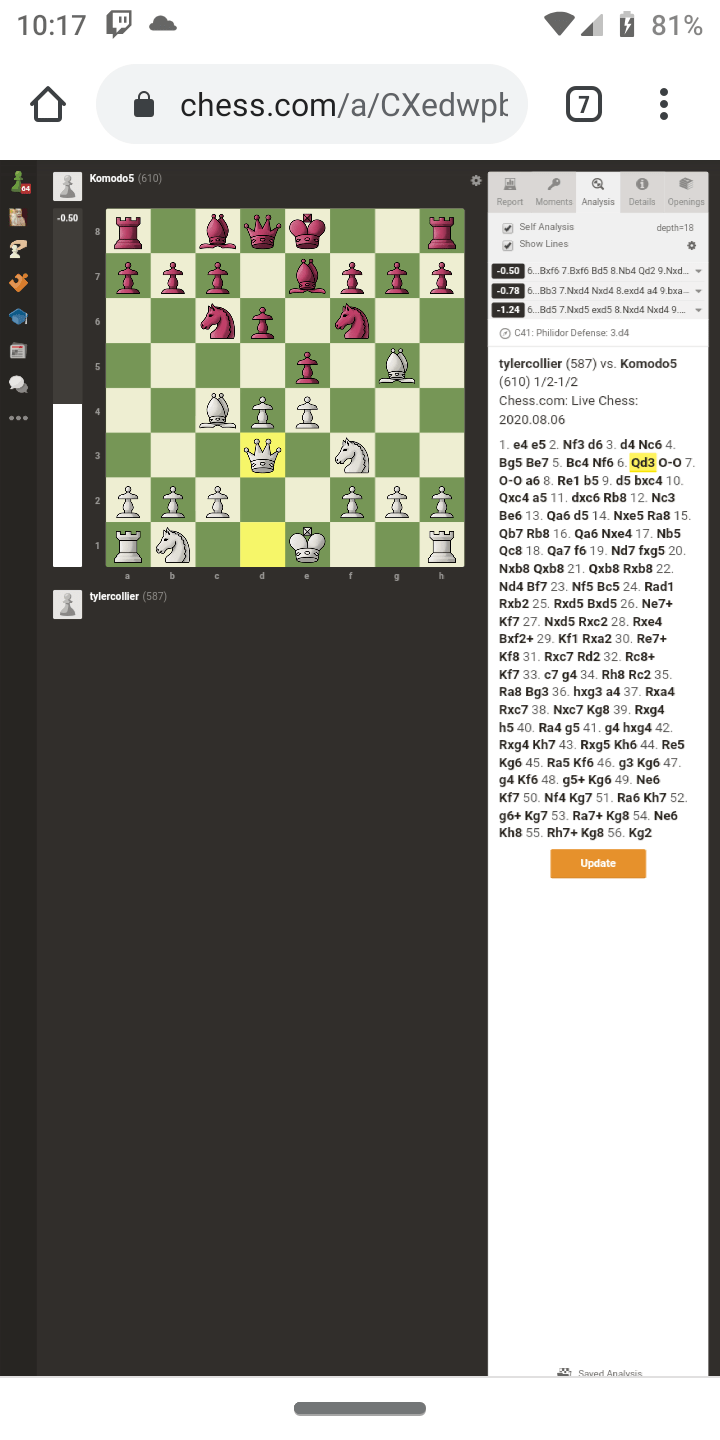I'm a beginner. I'm learning to use the analysis tools on chess.com. I'm being told that some of the moves were bad, and that instead I should have done something else, but sometimes I don't understand why the recommended move is better, or even good. I am working my way through the premium lessons, so I'm learning general theory, but in the meantime I'm too inexperienced to know the reasoning for the specific recommended move. My question is, what's the best place to get the answer? I suppose I could ask here but am hoping there's a really easy way, perhaps the analysis tool itself could offer a deeper explanation. Or is there single button I could click to generate a forum question directly linked to that move?
As an example, I played the following game and I played 9. d5 but the analysis is saying I should have played Bf6. In that scenario, I would have taken a knight, but then a pawn would have taken my bishop.
If you respond, please do not focus on this specific move but answer the general question of where to ask these types of questions. I glanced at the forum and didn't really see many of this style question so was surprised, perhaps this forum is not the right place anyway. Thanks for your help!
It's usually not too hard to figure out. If you look at the analysis after move 8, it shows you it's evaluation of the top 3 choices, including the one you mentioned Bxf6. The evaluation would be -0.5 indicating a very small advantage for black.

After you played d5, the computer evaluation is much lower -- -3.50 indicating that your move loses a piece because you have to deal with the pawn's attack on your queen instead of taking your opponent's knight, which I assume was your intention.

Comparing these alternatives shows why your move was bad.
If you take some time to work through these things, your ability to see these things before they happen should improve.
/ No, there is no button to ask a question.

I'm a beginner. I'm learning to use the analysis tools on chess.com. I'm being told that some of the moves were bad, and that instead I should have done something else, but sometimes I don't understand why the recommended move is better, or even good. I am working my way through the premium lessons, so I'm learning general theory, but in the meantime I'm too inexperienced to know the reasoning for the specific recommended move. My question is, what's the best place to get the answer? I suppose I could ask here but am hoping there's a really easy way, perhaps the analysis tool itself could offer a deeper explanation. Or is there single button I could click to generate a forum question directly linked to that move?
As an example, I played the following game and I played 9. d5 but the analysis is saying I should have played Bf6. In that scenario, I would have taken a knight, but then a pawn would have taken my bishop.
If you respond, please do not focus on this specific move but answer the general question of where to ask these types of questions. I glanced at the forum and didn't really see many of this style question so was surprised, perhaps this forum is not the right place anyway. Thanks for your help!